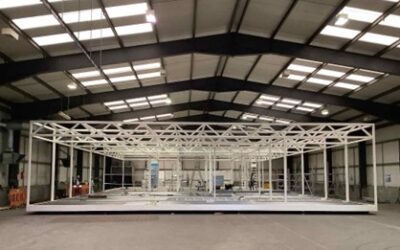Finally the new Annex 1 is published, after 7 years. The challenge is how best to apply good science and GEP (good engineering practice), as the goal is to improve product quality and ultimately patient safety and wellbeing.
The deadline for coming into operation of Annex 1 for both EMA and PIC/s documents is 25 August 2023, except for clause 8.123 which is postponed until 25 August 2024. New Annex 1 has 59 (58) pages Vs 16 in 2008 version
The assessment of risks (hazards) across the entire manufacturing process (QRM), and having a coherent and comprehensive contamination control strategy (CCS) in in the new Annex 1 has been a core element of Ardmac’s best practice GMP cleanroom design and applications.
For decades Ardmac’s engineers have been driven by the need for a detailed understanding of the process and hazards involved and the impact of contamination sources on client’s processes. The new Annex 1 is a culmination of a review and consultation process that started in 2015.
The new EU-GMP Annex 1 is designed to encourage the use of new technologies in sterile manufacturing, the increased use of isolators and RABS designs as well as incorporating the changes in ISO Cleanroom Standards (ISO 14644 series of dashes).
The fundamental approach in the new version is around a Pharmaceutical Quality System, with the application of QRM and risk assessment when developing a documented Contamination Control Strategy (CCS). This requires a thorough technical and process knowledge about potential sources of contamination.
The key highlights and takeaways include:
- Requirement to provide a formal contamination control strategy (CCS). This is a formal organisation-wide, risk-based strategy for minimising contamination and cross-contamination of medicinal products, based on QRM (ICH Q9 Quality Risk Management).
- Importance of implementing the CCS across all departments and functions to define all critical control points and assess the effectiveness and monitoring of all the contamination control risks (design, procedural, technical, and organizational).
- The CCS should not be treated as simply a document or a paper exercise created as a check box for compliance. It should be viewed as a living, breathing contamination control strategy of which all employees are aware and participate in.
- The CCS must be updated as a routine, in order to drive continuous improvement of the manufacturing and control methods.
Of particular note in the cleanroom design for classification at ISO 5, clause 4.27 follows the guidance in ISO 14644-1:2015. Table 1 removes the requirement for classification at the ≥5.0µm particle size for Grade A and B, At Rest. However, note a) indicates “Classification including 5µm particles may be considered where indicated by the CCS or historical trends”. Other concentration limits are aligned with 14644-1:2015.
There are also important clauses dealing with airflow visualisation and air velocity at the working position that require very careful consideration. Later blogs will address these specific requirements.
In order to implement the new Annex 1 a high-level gap assessment is required to identify potential contamination hazards or risks.
It’s important to update any previous risk assessments to ensure compliance with the new Annex 1. For newly identified contamination risks, appropriate control measures and monitoring systems should be designed and implemented.
You can download a copy of the EMA website at Revision – Manufacture of Sterile Medicinal Products (europa.eu)





